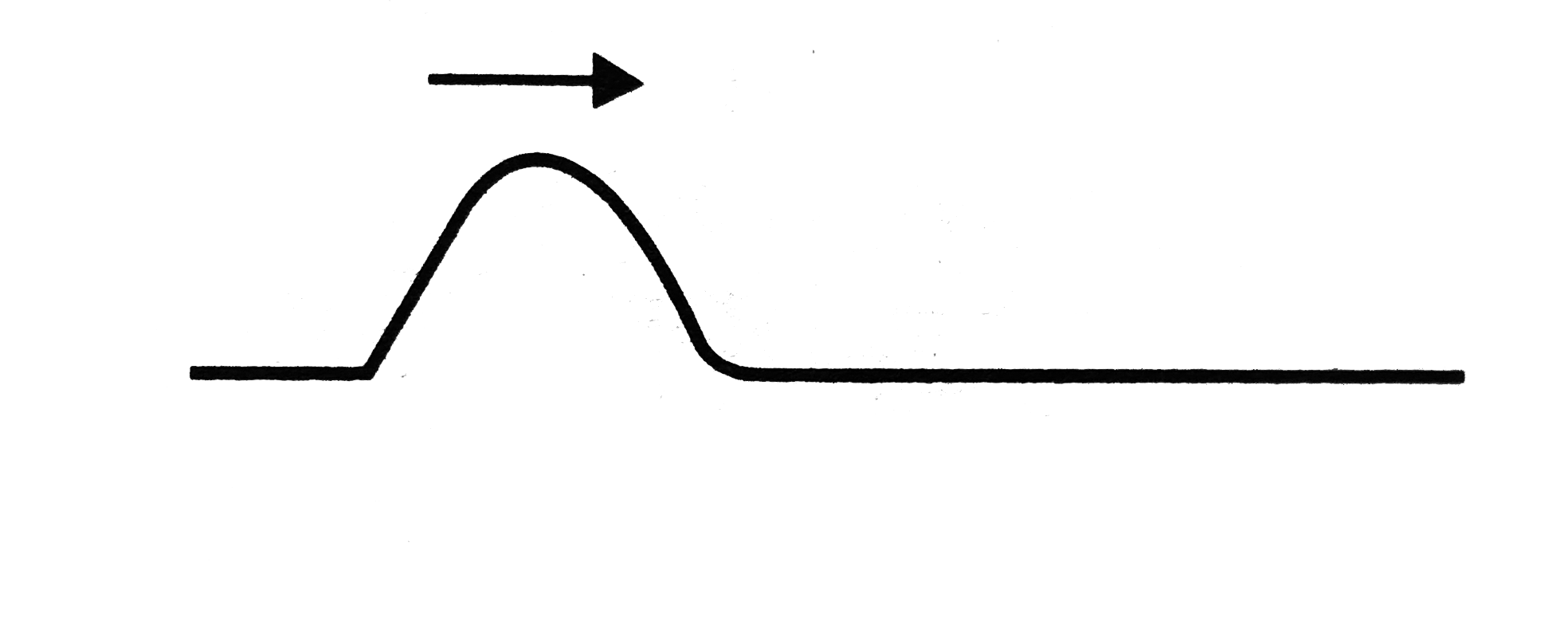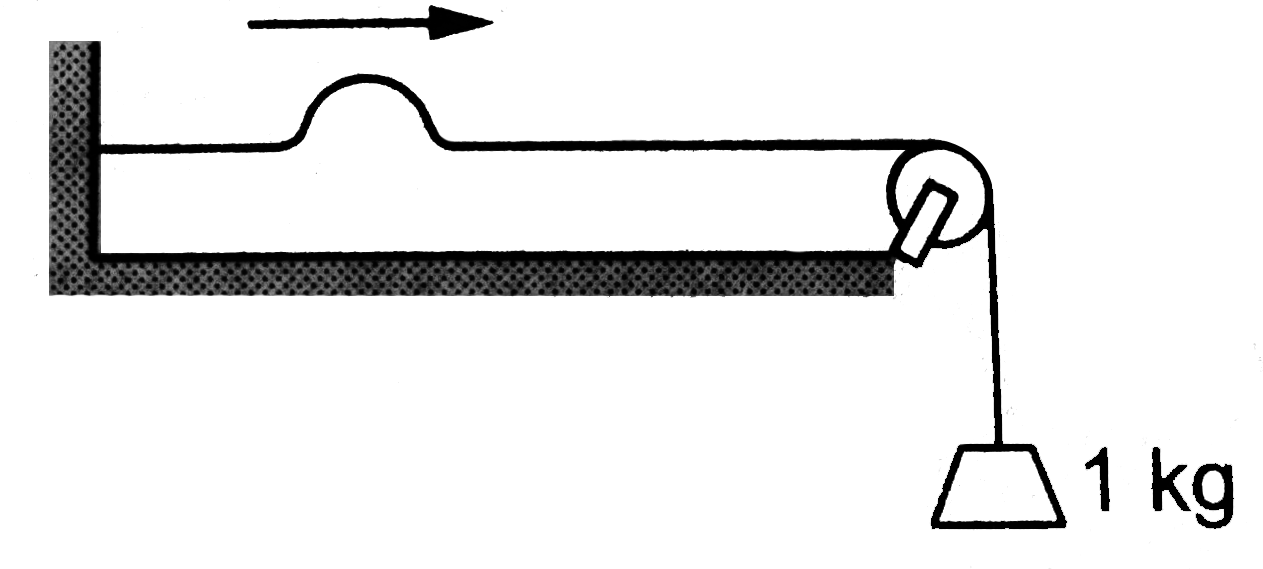The pulse shown in figure has a speed of 10 cm/s.a If the linear mass density of the right string is 0.25 that of the left string. at what speed does the transmitted pulse travel ?b Compare the heights of the transmitted pulse and the reflected pulse to that of the incident pulse.
v2 = 2v1 = 20 cm/s
Related Solutions
The pulse shown in figure has a speed of .

(a) If the linear mass density of the right string is 0.25 that of the left string, at what speed does the transmitted pulse travel?
(b) Compare the heights of the transmitted pulse and the reflected pulse to that of the incident pulse.View SolutionThe pulse shown in figure has a speed of .

(a) If the linear mass density of the right string is 0.25 that of the left string, at what speed does the transmitted pulse travel?
(b) Compare the heights of the transmitted pulse and the reflected pulse to that of the incident pulse.View SolutionThe pulse shown in Fig.7.73 has a speed of . If the linear mass of the right string is that of the left string , find the ratio of height of the transmitted pulse to that of incident pulse.
 View Solution
View SolutionThe pulse shown in Fig.7.73 has a speed of 5 cm//s . If the linear mass of the right string is 0.5 that of the left string , find the ratio of height of the transmitted pulse to that of incident pulse.
View SolutionCalculate the velocity of the travelling pulse as shown in the figure below. The linear mass density of pulse is 0.25 kg . Further, compute the time taken by the travelling pulse to cover a distance of 30 cm on the string.
 View Solution
View SolutionFigure shows a string of linear mass density on which a wave pulse is travelling. Find the time taken by pulse in travelling through a distance of on the string. Take
 View Solution
View SolutionFigure shows a string of linear mass density on which a wave pulse is travelling. Find the time taken by pulse in travelling through a distance of on the string. Take
 View Solution
View SolutionFigure shows a string of linear mass density on which a wave pulse is travelling. Find the time taken by pulse in travelling through a distance of on the string. Take
 View Solution
View SolutionTwo pulses travel in mutually opposite directions in a string with a speed of as shown in the figure. Initially the pulses are apart. What will be the state of the string after two seconds?
View SolutionTwo pulses travel in mutually opposite directions in a string with a speed of as shown in the figure. Initially the pulses are apart. What will be the state of the string after two seconds?
View SolutionFigure showa a string of linear mass density g=10 ms^-2.
 View Solution
View SolutionFigure showa a string of linear mass density g=10 ms^-2.
 View Solution
View SolutionFigure showa a string of linear mass density on which a wave pulse is travelling. Find the time taken by the pulse in travelling through a distance of 50 cm on the string. Take .
 View Solution
View SolutionA wave pulse, travelling on a two piece string, gets partically reflected and partically transmitted at the junction, The reflected wave is inverted in shape as compard to the incident one. If the incident wave has speed and the transmitted wave
View SolutionA wave pulse, travelling on a two piece string, gets partically reflected and partically transmitted at the junction, The reflected wave is inverted in shape as compard to the incident one. If the incident wave has speed and the transmitted wave
View SolutionA wave pulse, travelling on a two piece string, gets partically reflected and partically transmitted at the junction, The reflected wave is inverted in shape as compard to the incident one. If the incident wave has speed and the transmitted wave
View Solution
When a wave pulse travelling in a string is reflected from rigid wall to which string is tied as shown in figure. For this situation two statements are given below.
(1) The reflected pulse will be in same orientation of incident pulse due to a phase change of radians
(2) During reflection the wall exert a force on string in upward directionView SolutionA wave pulse, travelling on a two-piece string, gets partially reflected and partially transmitted at the junction. The reflected wave is inverted in shape as compared to the incident one. If the incident wave has wavelength lambda and the transmitted wave lambda then
View SolutionA wave pulse, travelling on a two piece string, gets partially reflected and partialy transmitted at the junction. The reflected wave is inverted in shape as compared to the incident one. If the incident wave has wavelength lamda and the transmitted wave lamda
View SolutionA wave pulse, travelling on a two piece string, gets partially reflected and partially transmitted at the junction. The reflected wave is inverted in shape as compared to the incident one. If the incident wave has wavelength lambda and the transmitted wave lambda' .
View Solution
